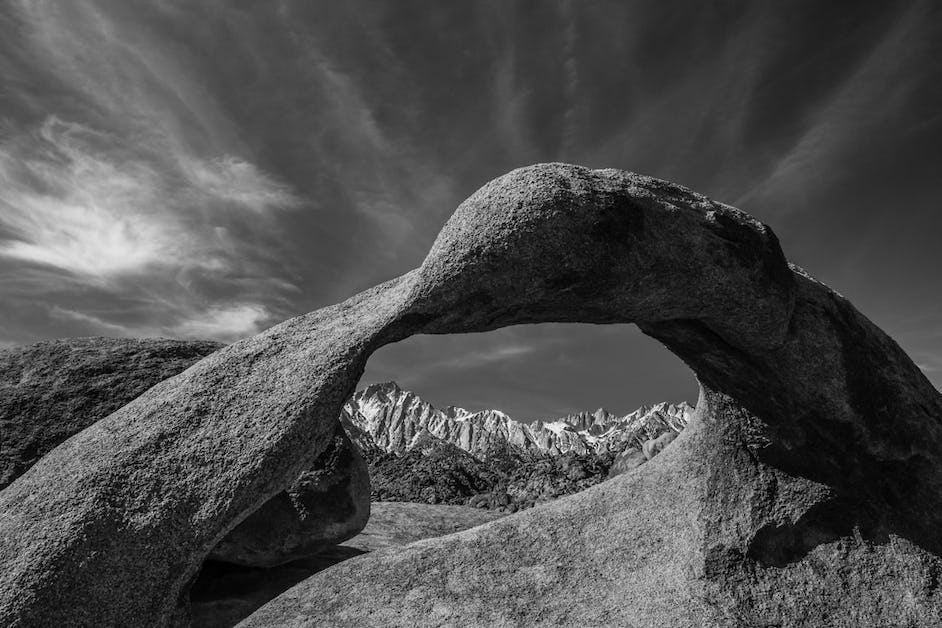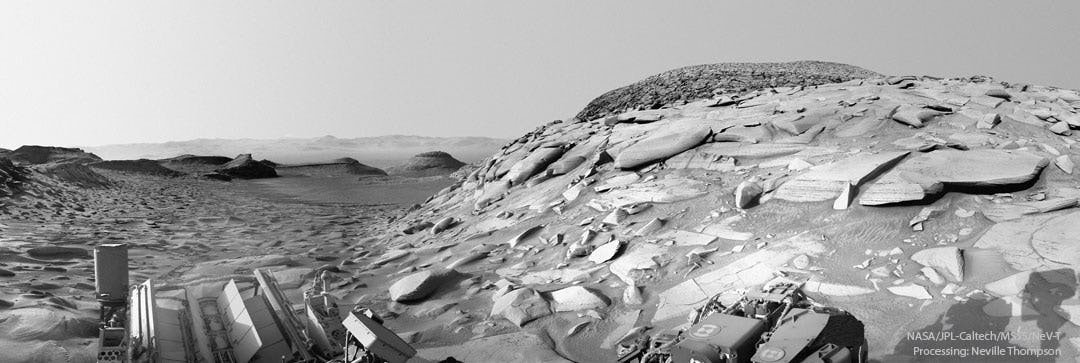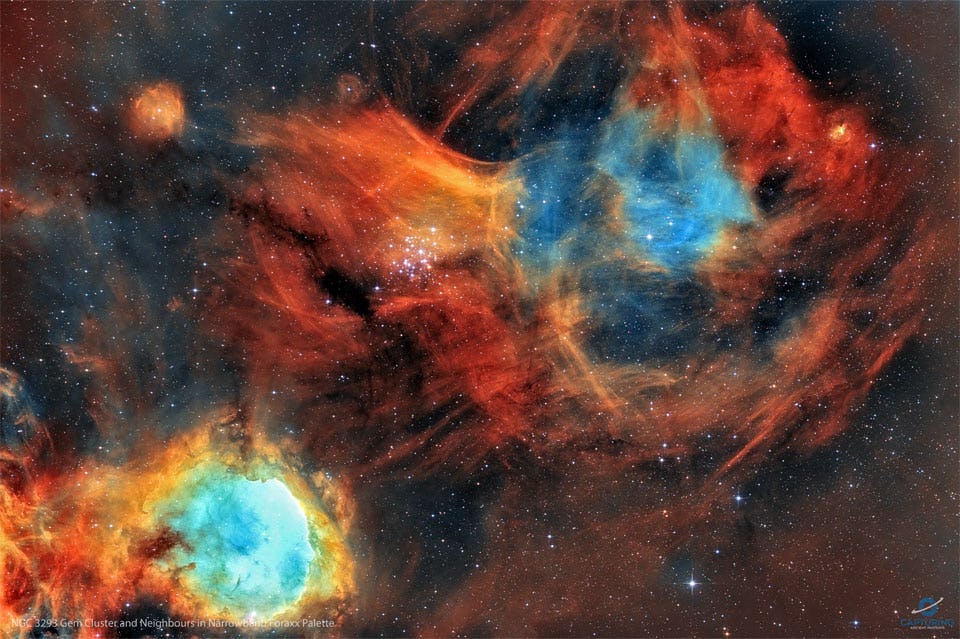A day late,
a dollar short.
Some of plans,
we must abort.
Public Posts Stanwood, WA Stanwood, WA (zoom)
NASA Astronomy Picture of the Day:
Why are there so many flat rocks on Mars? Some views of plains and hills on Mars show many rocks that are unusually flat when compared to rocks on Earth. One reason for this is a process that is common to both Mars and Earth: erosion. The carbon-dioxide wind on Mars can act like sandpaper when it blows around gritty Martian sand. This sand can create differential erosion, smoothing over some rocks, while wearing down the tops of other long-exposed stones. The featured image capturing several hills covered with flat-topped rocks was taken last month by NASA's Curiosity Rover on Mars. This robotic rover has now been rolling across Mars for ten years and has helped uncover many details of the wet and windy past of Earth's planetary neighbor. After taking this and other images, Curiosity carefully navigated stones and slippery sand to climb up Marker Band Valley.
Photo by NASAJPL-CaltechMSSSNeville Thompson
I am so pathetic,
searching for a friend,
to talk about life,
until our time ends.
You only live once,
it's not what it seems.
You live life over,
again, in your dreams.
Dreams are the way
life is lived to tell,
knowing your life
has been lived well.
I dreamt, last night,
a dream of bliss,
I received from you,
my very first kiss.
Why does love, sometimes,
appear in the way,
dreaming the dreams,
of life's yesterday?
Words, so many,
sentences, a few.
I am stir crazy,
thinking about you.
A lot of men worked,
a lot of men tried,
to rid the body
of the beast inside.
Inside the body,
the beast had its way,
liking the shape,
He decided to stay.
NASA Astronomy Picture of the Day:
The Great Carina Nebula is home to strange stars and iconic nebulas. Named for its home constellation, the huge star-forming region is larger and brighter than the Great Orion Nebula but less well known because it is so far south -- and because so much of humanity lives so far north. The featured image shows in great detail the northernmost part of the Carina Nebula. On the bottom left is the Gabriela Mistral Nebula consisting of an emission nebula of glowing gas (IC 2599) surrounding the small open cluster of stars (NGC 3324). Above the image center is the larger star cluster NGC 3293, while to its right is the emission nebula Loden 153. The most famous occupant of the Carina Nebula, however, is not shown. Off the image to the lower right is the bright, erratic, and doomed star known as Eta Carinae -- a star once one of the brightest stars in the sky and now predicted to explode in a supernova sometime in the next few million years.
Photo by Carlos Taylor
Friedrich Wilhelm Nietzsche (1844 -1900) German philosopher, cultural critic, composer, poet, philologist, and a Latin and Greek scholar.
I Am!
I am—yet what I am none cares or knows;
My friends forsake me like a memory lost:
I am the self-consumer of my woes—
They rise and vanish in oblivious host,
Like shadows in love’s frenzied stifled throes
And yet I am, and live—like vapours tossed
Into the nothingness of scorn and noise,
Into the living sea of waking dreams,
Where there is neither sense of life or joys,
But the vast shipwreck of my life’s esteems;
Even the dearest that I loved the best
Are strange—nay, rather, stranger than the rest.
I long for scenes where man hath never trod
A place where woman never smiled or wept
There to abide with my Creator, God,
And sleep as I in childhood sweetly slept,
Untroubling and untroubled where I lie
The grass below—above the vaulted sky.
John Clare (1793 – 1864) was an English poet. The son of a farm laborer born in the English village of Helpstonhe. He became known for his celebrations of the English countryside and sorrows at its disruption. With little formal education, Clare wrote numerous poems and prose pieces. His work was first published in 1820 with more published posthumously. He is now seen as a major 19th-century poet after his work underwent major re-evaluation in the late 20th century.








.jpg?fit=crop&w=280&h=280&q=93)



















 - Copy.jpg?fit=crop&w=280&h=280&q=93)


R.jpg?auto=format&fit=clip&w=600)





















